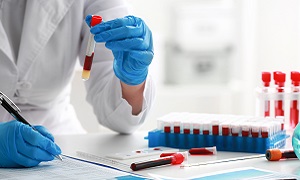Best Anemia Treatment Doctors (Hematololgists) in India
Best Anemia Treatment Hospitals in India
- City: Bengaluru, India
Hospital Highlights:
- Fortis Hospital Bannerghatta, Bengaluru was established in 2006.
- The hospital is a 276 bedded multi-specialty tertiary care facility.
- The hospital specializes in cutting-edge medical technology and dedicated patient care services.
- The hospital is equipped with state-of-the-art technologies like trans-radial angioplasty, trans-abdominal cardiac surgery, and computerized TKR navigation surgery.
- The hospital provides specialty medical services in cardiology, cardiac surgery, orthopedics, neurology, neuro-surgery, GI, and Minimal Access Surgery (MAS).
- City: Chennai, India
Hospital Highlights:
- Fortis Malar was established in 1992 and was formerly known as Malar Hospital.
- The hospital specializes in cutting-edge medical technology and dedicated patient care services.
- The hospital is multi-specialty, tertiary care facility with 180 beds.
- The hospital offers comprehensive medical care in specialties such as cardiology, cardio-thoracic surgery, neurology, neurosurgery, orthopedics, nephrology, gynecology, gastroenterology, urology, pediatrics, and diabetes.
- City: New Delhi, India
Hospital Highlights:
- Established in 1996, Pushpawati Singhania Research Institute is one of the top hospitals in the NCR region, as well as one of the top facilities in India for gastroenterology. The hospital is one of South Asia’s first institutes in medical and surgical treatment for diseases related to digestion.
- The hospital is equipped with state-of-the art facilities coupled with the latest equipment as well as renowned consultants from various parts of India as well as other parts of the world.
- City: New Delhi, India
Hospital Highlights:
- State-of-the-art technology and devoted healthcare professionals have been brought together under one roof at Venkateshwar Hospital to provide genuine medical care. The hospital’s professionals work together as a team to deliver the best possible treatment to their patients, using the most sophisticated equipment and information technology.
- Venkateshwar Hospital’s mission is to attain global excellence in healthcare by employing evidence-based, ethical clinical practices and cutting-edge technology by a team of highly skilled experts.
- City: New Delhi, India
Hospital Highlights:
- Sir Ganga Ram Hospital, New Delhi is known to provide the latest medical procedures with the latest technology in all of its units.
- The hospital has a team of reputed doctors, nurses, and healthcare professionals that ensure that patients receive quality care at affordable costs.
- Staffed with a team of highly qualified doctors, dedicated nurses, and paramedical and non-medical staff, the hospital aims to lead in healthcare delivery, medical education, training, and research.
- As per the vision of the founder, the hospital also provides free treatment to the economically weaker sections of society.
- Sir Ganga Ram Hospital also provides training to young doctors under the Diplomate in National Board(DNB) program. The DNB program at the hospital was started in 1984 and it is known for currently running the maximum number of DNB specialties in the country. It also has the distinction of having the first bone bank in India.
- City: Kerala, India
Hospital Highlights:
- Established in 2019, Apollo Adlux Hospital is the first Apollo Hospital in Kerala and the 73rd hospital owned by Apollo Group in India. With the state’s most advanced, comprehensive healthcare infrastructure and cutting-edge technologies, Apollo Adlux Hospital stands as an example of medical excellence in Kerala.
- With over 34 multi-specialty departments, the hospital believes in providing the best quality treatment to its patients at affordable rates, ensuring comfort at their difficult times.
- The 300-bed hospital is managed by a team of highly qualified and experienced experts who delivers exceptional hospitality to their patients and treats them with great compassion.
- With its affiliation with the Apollo Hospitals Group, the hospital aims in providing patients with top-notch healthcare services while also serving communities in Kerala.
- The hospital has good railway and road connections, and is conveniently close to Cochin International Airport.
- City: Gurugram, India
Hospital Highlights:
- Situated near DLF Cyber City, Gurugram, Narayana Superspecialty Hospital is one of the top medical facilities in the Delhi NCR region, catering to the needs of the people. Known for its commitment to quality medical care and patient service, the hospital is a state-of-the-art facility with planned and well-equipped sections, which includes a spacious OPD area as well as comfortable patient rooms.
- It is the closest super-specialty hospital from Indira Gandhi International Airport towards Gurugram, and also the nearest super specialty hospital from DLF Cyber City. It is also close to major residential areas in Gurugram.
- It is part of the renowned Narayana Health Group. Established in 2000, by Dr. Devi Shetty, a renowned cardiac surgeon, it has grown to be one fo India’s leading healthcare groups.
- City: Noida, India
Hospital Highlights:
- Fortis Hospital, Noida, stands as one of the oldest and most trusted healthcare institutions in the region, setting a benchmark for comprehensive medical care.
- As the second mega hub hospital in the Fortis Healthcare Group, Fortis Hospital, Noida, upholds a legacy of trust among more than 1.2 million patients. By integrating top-tier professionals with cutting-edge technology, the hospital delivers superior treatment across various medical disciplines.
- Specializing in advanced Neurosciences, Orthopedics, Kidney and Liver Transplant Programmes, Fortis Hospital, Noida has successfully performed over 1,500 transplants, solidifying its reputation as a leader in specialized medical interventions.
What is Anemia?
Anemia is a common medical condition in which there is a deficit of Red Blood Cells for carrying oxygen to the various organs of the body. People who suffer from this condition have a low hemoglobin level which is the main protein of the red blood cells. One may feel weak & tired if he/she is suffering from the condition. This is because your body cannot supply the organs with what they need to work.
Anemia is the most common blood condition in many countries that most of the women & children suffer from.
There is a high demand for blood supply in women during their gestation period. Hence, women who have deficient red blood cells suffer from iron deficiency anemia.
Causes of Anemia
There are many causes of the condition and vary from person to person. Let’s have a look at some of the most common causes of anemia.
- Due to decreased RBCs- When the body of a person isn’t able to create the required number of RBCs, the person is more likely to suffer from anemia. This is because your body lacks the essential nutrients, vitamins and minerals and in turn, the RBCs don’t function well.
- Due to blood loss- Many people don’t realize the loss of blood cells through bleeding. Such bleeding takes place over a long duration of time slowly. Non-steroidal anti-inflammatory drugs and many gastrointestinal conditions may cause blood loss in the body leading to anemia. Surgery and trauma may also induce increased blood loss in the body.
- Due to faulty RBC production- The body might not produce red blood cells because of stem cell problems and bone marrow problems. Stem cells are special cells that develop into various cell types. They can vary from brain cells to muscle cells. They have the ability to fix damaged tissues of the body and are potential cells for the treatment of various diseases. The bone marrow is a viscous tissue that fills the bones from inside. The types of bone marrow are red bone marrow and yellow bone marrow. Red bone marrow is responsible for producing the blood cells while yellow born marrow helps to store fat. When there is a deficiency of stem cells in the marrow or they malfunction or other cells replace them, then there is a faulty production of RBCs in the body. Hence, the chances of having anemia increases.
- Due to the destruction of RBCs- A person may suffer from hemolytic anemia if the red blood cells in his body are fragile and cannot travel throughout the body, resulting in bursting of RBCs. An attack on the immune system or enlarged spleen may also cause hemolytic anemia.
Symptoms of Anemia
Following are the common symptoms associated with the condition:
- Anemic patients appear pale and cold.
- Anemic patients suffer from fatigue and weakness. Most of the time they feel dizzy and tired.
- Anemics suffer from lightheadedness. Such people encounter trouble in concentrating on anything.
- You may also find some oral symptoms in anemic people. They have inflammation in their tongue which results in the red, painful, smooth, and glossy tongue.
- Severe symptoms of anemia include fainting. Unusual heartbeat and headache are common in anemics.
- Children and teenagers suffer from growth problems. They have pain in their bones and joints.
- On physical examination, the symptoms include low or high blood pressure, an increase in the heart rate, jaundice and heart murmurs. Sometimes, the person suffers a heart attack.
- Chest pain, brittle nails, and shortness of breath are some other symptoms found in anemic patients.
Types of Anemia
The distinct types of anemia are:
- Aplastic Anemia– When your body doesn’t produce adequate red blood cells then there are more chances of aplastic anemia. Autoimmune diseases, exposure to toxic chemicals and infections may induce aplastic anemia.
- Sickle Cell Anemia– It is a hemolytic anemia that a person inherits from his parents. A defective form of hemoglobin causes this condition as the red blood cells take the shape of a sickle. The cells die prematurely while leads to a shortage of red blood cells.
- Iron Deficiency Anemia- The bone marrow makes hemoglobin with the help of iron. Your body cannot make hemoglobin for the red blood cells with a deficiency of iron. The deficiency of iron in the body causes iron-deficiency anemia.
- Vitamin Deficiency Anemia- Human body needs vitamins and minerals for the healthy production of the red blood cells. If your body lacks essential vitamins and nutrients, then the production of the red blood cells decreases leading to vitamin deficiency anemia. Another name for vitamin deficiency anemia is pernicious anemia.
- Thalassemia– This is an inherited condition which causes decreased hemoglobin level than normal. Hemoglobin is responsible for the distribution of oxygen to the tissue organs through the red blood cells. The condition leads to anemia, which causes fatigue.
Diagnosis of Anemia
Following are the common diagnostic tests for Anemia:
- A complete blood count test helps to form a diagnosis. CBC measures the hemoglobin, red blood cells and other composition of blood.
- A differential count or blood smear also helps in forming a diagnosis by counting the white blood cells in the blood. These tests help in checking the unusual cells and in checking the shape of the red blood cells.
- The reticulocyte count helps to check for the immature red blood cells in the blood.
Treatment options of Anemia
The treatment options for different types of Anemia are as follows:
Aplastic Anemia
Blood transfusions are the best treatment for aplastic anemia. Blood transfusion helps to boost the number of RBCs in the body. Also if the bone marrow doesn’t have the potential to make healthy RBCs, then BMT can help in treating the condition.
Sickle Cell Anemia
Iron Deficiency Anemia
Vitamin Deficiency Anemia
Thalassemia
In most of the cases, the condition is mild and does not require treatment. However, in severe cases; folic acid supplements, medications, blood transfusion or BMT is helpful.














